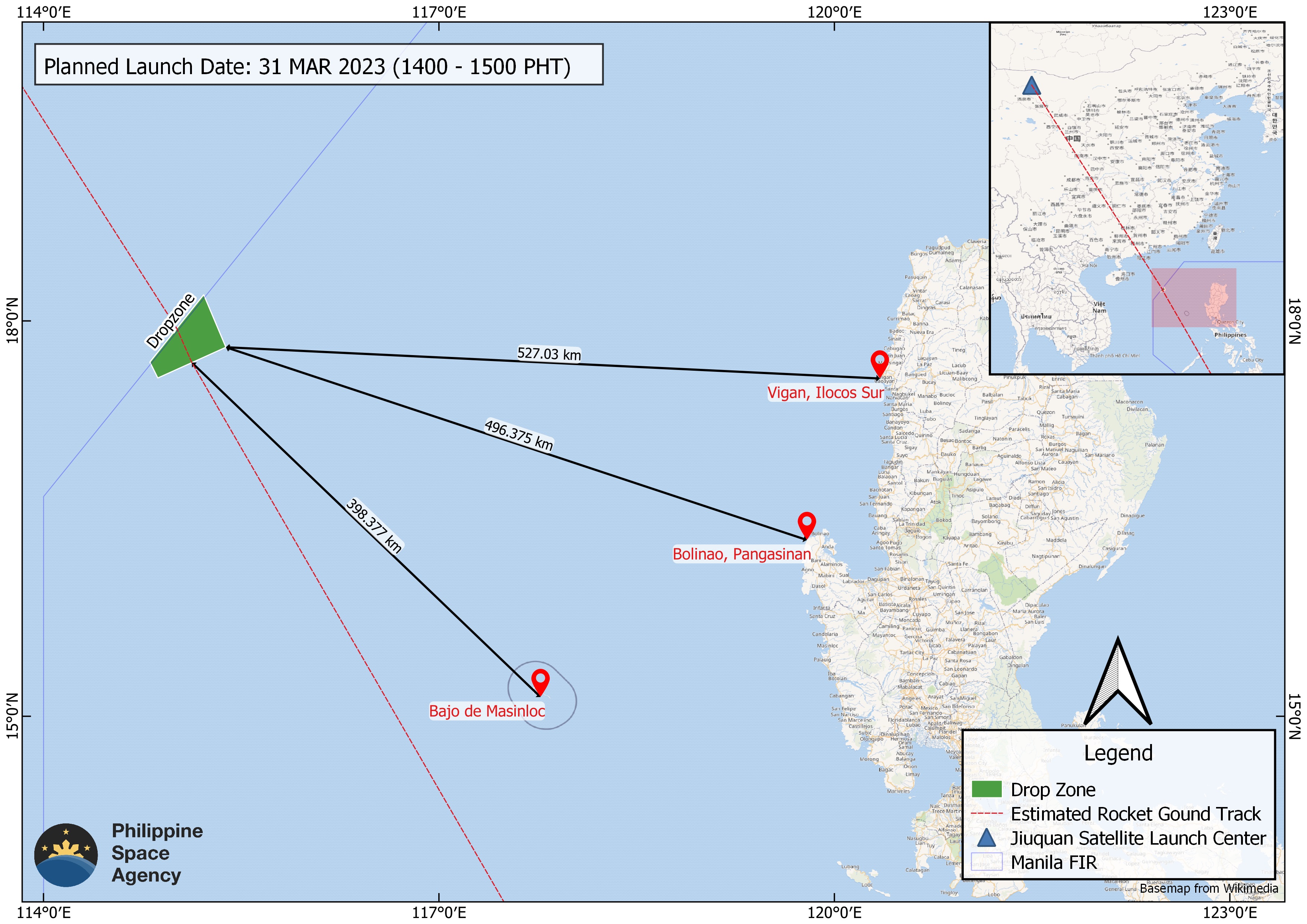The Philippine Space Agency (PhilSA) is monitoring debris from the Long March 4C rocket confirmed to have launched on Friday, 2:27 PM Philippine time, from Jiuquan Space Launch Center in Gobi Desert, Inner Mongolia. Expected unburned debris discarded before the rocket entered outer space is projected to have fallen approximately 398 kilometers from Bajo de Masinloc. The debris is unlikely to have dropped on land features or inhabited areas within the Philippine territory. However, discarded debris may float around the area or wash to nearby coasts.

The estimated drop zone coordinates are:
17 48 00N 115 23 00E
17 34 00N 114 52 00E
17 41 15N 114 48 24E
18 11 56N 115 12 54E
Prior to launch, PhilSA issued an advisory to relevant government authorities that reiterated the risks of falling debris to ships, aircraft, fishing boats, and other vessels passing through the drop zone area, and recommended the issuance of warnings and temporary restrictions. The drop zone area was verified through coordination with the Civil Aviation Authority of the Philippines (CAAP), which received the Notice to Airmen (NOTAM) issued by the Civil Aviation Administration of China about the flight activity.
Long March 4C is known to carry toxic chemicals such as fuel. PhilSA cautions everyone against retrieving or coming in close contact with debris that may contain remnants of toxic substances such as rocket fuel. Personnel protective equipment (PPE) is recommended when contact with the debris is unavoidable. PhilSA also advises the public to avoid retrieving sighted debris and instead immediately inform local authorities for appropriate action.
PhilSA will continue to monitor the possible re-entry of the rocket’s upper stages to Earth’s atmosphere.




